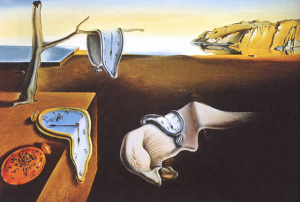What’s My Investment Timeline?
 Investing can be broken into three primary colors: rewards, risk and time. The connection between risk and reward is well known, but today we’re going to focus on the third component, time. Time has a big impact on what you can expect of your investments – probably more than you think. Let’s take a look at a series of investment timelines and what you can expect from each.
Investing can be broken into three primary colors: rewards, risk and time. The connection between risk and reward is well known, but today we’re going to focus on the third component, time. Time has a big impact on what you can expect of your investments – probably more than you think. Let’s take a look at a series of investment timelines and what you can expect from each.
Immediate returns – right now
Where can you earn a return immediately? High interest savings bank accounts come to mind. These are federally insured demand deposits with daily liquidity. These days high interest savings means roughly 1% per year on your cash balance, meaning $100K would yield $1K in pre-tax interest. Not great, but it is a return you can lock in and count on. Other immediate returns exist in sophisticated market arbitrage, options trading and high frequency trading available to a very select few. 
3 years
CDs offer rates higher than 1% if you’re willing to lock up your cash for 18+ months. If that still doesn’t sound great, short term financing in the private markets could yield more. However, those private loans to friends and small businesses are often far riskier than they appear. Beware.
Stocks typically produce much higher returns than interest based investments. But with a hard stop three years from now, you’re subject to the whims of market volatility. Your outcome could be anything — from very positive to very negative. The stock market over the short term is mostly a voting machine, very sensitive to the emotions and opinions of investors. Three years just isn’t enough time to expect any kind of predictable result.
5 years
The longer you hold securities, the more likely they are to behave like their long term averages. In statistics, this is called regression to the mean. Over longer periods, stock market prices tend to reflect the fundamental value of the assets and future earning potential. At five years, you can expect that a globally diversified market portfolio in stocks, bonds and alternatives will begin to approach expectations. But still you should expect volatility.
10 years
Expanding your timeline to ten years increases the probability that returns will be close to long term averages. Some say that a ten year period covers a “market cycle” — a recession to expansion and back – but that’s not always the case. Trying to time your investment to buy at the bottom and sell at the top is something that 99% of investors will get wrong. One antidote to big market swings over 10 years is to keep your risky assets from growing too large when markets rise significantly, and from being too small when markets fall. We call this risk-constancy and it’s something we do for all clients at Osbon Capital.
30 years
We encourage investors to keep a 10 to 30 year timeline. We can expect that all markets are going to be volatile and unpleasant at times over that period. We also know that equity markets trend upwards as innovation converts into progress. US equity markets have returned 9%+ per year consistently when viewed over very long periods — but that doesn’t mean it will happen over any specific timeframe. For example, Japan, the world’s third-largest economy, has experienced near 0% growth for well over a decade.
Globally diversified portfolios capture returns from many sources. Long-term progress will be punctuated with periods of disappointing, even scary, downturns. But keeping your eyes on the horizon is better for your long-term financial health than staring at the bumps in the road.
Forever
Some clients tell us, “I don’t want to die in a coffin full of cash.” Or, “I want my last check to bounce.” Others tell us they are stewards of wealth, guiding their assets to future beneficiaries. Where do you stand on your timeline? We’d like to hear from you.
Max Osbon – mosbon@osboncapital.com
Weekly Articles by Osbon Capital Management:
"*" indicates required fields
